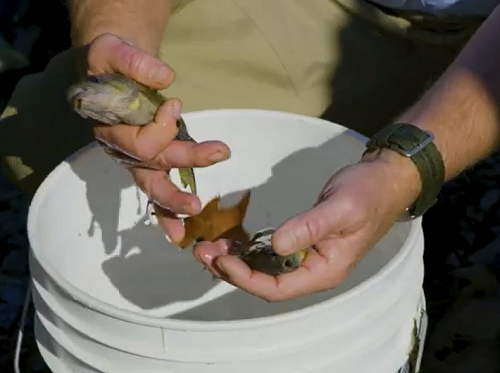FEDERAL ACTION
Cities scramble to implement climate law – Energy News Network
Environmental groups call on Buttigieg to restore Obama-era train brake rule – The Hill
How to reform federal permitting to accelerate clean energy infrastructure: A nonpartisan way forward – Brookings
Governors Collaborate to Speed Energy Infrastructure Construction – National Governors Association (media release)
Biden-Harris Administration Announces Latest Steps to Deliver a National Network of Convenient, Reliable, Made-in-America Electric Vehicle Chargers – FHWA (media release)
COVID-19
Coronavirus Disease 2019 (COVID-19) Pandemic; Continuation of National Emergency (Notice of February 10, 2023) – Presidential Document
INFRASTRUCTURE RESILIENCE AND SUSTAINABILITY
NCDOT ‘Bump-Outs’ Help Prevent Street Flooding – AASHTO Journal
To tap U.S. government billions, Tesla must unlock EV chargers – Reuters
Chattanooga Will Use Smart Intersection Insights To Plan EV Charging Stations – StateTech
California agencies form partnership to prepare Highway 37 for sea level rise – Pacific Sun
Who moves and who pays? Managed retreat is hard, but lessons from the past can guide us – The Conversation
AIR QUALITY
Colorado lawmakers want more flexibility for ozone-season free transit program – Colorado Newsline
DOE Funds Plans for EV Charging, Hydrogen Fueling on Freight Corridors – Transport Topics
Virginia lawmakers kill bill that would have repealed law on California car emission standards – The Virginian-Pilot
FAA clears hydrogen-powered airplane for first flight – Seattle Times
Air pollution now linked to late-life depression – Air Quality News
ENVIRONMENTAL JUSTICE
Road to Ruin – Baltimore Magazine
Not just building roads: MoDOT aims to fight homelessness – St. Louis Post-Dispatch
Researchers illuminate gaps in public transportation access, equity – University of Illinois
Why a pipeline project in Houston is raising concerns over environmental racism – USA Today
NATURAL RESOURCES
FDOT officials say drivers are responsible for over 200 tons of trash collected on Southwest Florida highway – WFTX-TV
Wildlife Crossings Along U.S. Roads Can Benefit Animals, People, and Climate – Pew
CULTURAL RESOURCES
Ferry to Angel Island State Park going electric – CBS/Bay City News Service
Take Me Out to the Wind Turbines – Bloomberg Green
HEALTH AND HUMAN ENVIRONMENT/ACTIVE TRANSPORTATION
Bicyclists say Albuquerque trail is getting dangerous – KRQE-TV
Montana Bill Allowing E-Bikes Wherever Bicycles Are Allowed, Advances In Key Vote – Montana Free Press
San Antonio’s population growth adds congestion, danger for local cyclists – San Antonio Report
Shenandoah Valley Rail Trail supporters to meet along proposed trail route – Northern Virginia Daily
VCU kicks off pedestrian safety campaign with referees – Axios
Norfolk, Nebraska adds cameras on traffic signals for pedestrians – Norfolk Daily News
Should Electric Scooters Make A Universal Sound To Alert Pedestrians? – InsideEVs
State Patrol says Coloradans need to become better pedestrians – KRDO-TV
Port Authority Opens Newly Renovated And Vastly Improved Bicycle And Pedestrian Walkway On North Side Of George Washington Bridge As Part Of Comprehensive ‘Restoring The George’ Program – Port Authority of New York & New Jersey (media release)
TRB RESOURCES/ANNOUNCEMENTS
Advancing Transportation Equity – Key Insights from 2021 and Looking to 2024 – TRB (Webinar)
The Jury is Still Out – The Latest on Recycled Plastic Waste in Asphalt – TRB (Webinar)
TRB Webinar: Use of Recycling Agents in Asphalt Concrete Mixtures – TRB (Webinar)
Partnerships for Equitable Pandemic Response and Recovery – TCRP
Safety at Midblock Pedestrian Signals – NCHRP
Systemic Inequality in the Airport Industry: Exploring the Racial Divide – ACHRP
Launching a Transit Revolution: Addressing Barriers Preventing Youth from using Public Transportation to Get to and from School – Mineta Transportation Institute
FEDERAL REGISTER NOTICES
Notice of Public Meeting of the Invasive Species Advisory Committee – National Invasive Species Council (Notice)
Protection of Marine Archaeological Resources – Bureau of Ocean Energy Management (Notice of proposed rulemaking and request for comment)
Navigation and Navigable Waters, and Shipping; Technical, Organizational, and Conforming Amendment – Coast Guard (Final rule)
National Environmental Policy Act Guidance on Consideration of Greenhouse Gas Emissions and Climate Change – Council on Environmental Quality (Notice of extension for request for comments)
Air Plan Approval; California; Innovative Clean Transit Regulation – EPA (Final Rule)
Advisory Committee for Environmental Research and Education; Notice of Meeting – National Science Foundation (Notice)
Response to Western Water Quantity (WWQ) Listening Session – Natural Resources Conservation Service (Notice)
Public Conduct on Bureau of Reclamation Facilities, Lands, and Waterbodies – Bureau of Reclamation (Notice of proposed rulemaking)


